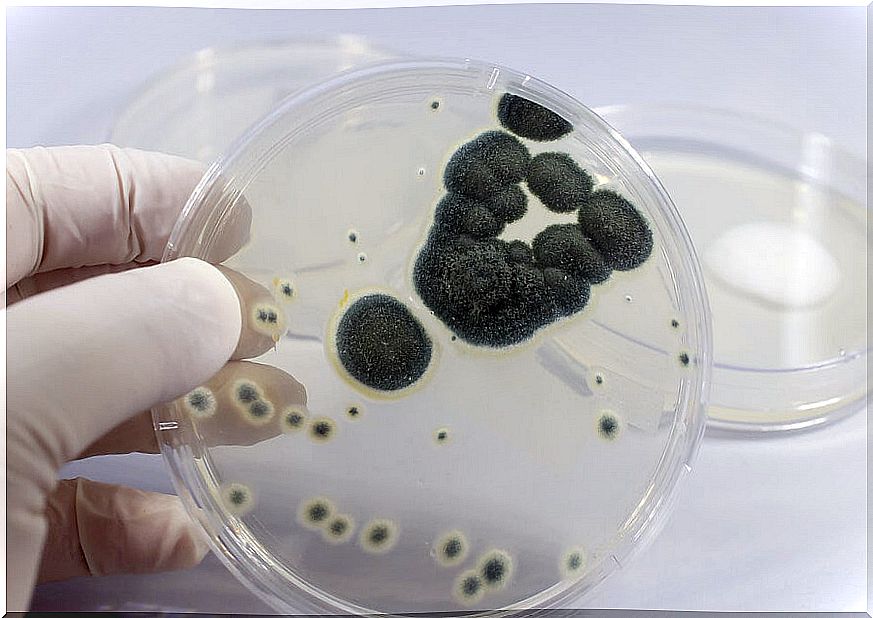What Is Penicillin And What Is It For?
Penicillin is an antibiotic medicine derived from the Penicillium fungus . This great discovery in the world of medicine is due to the scientist Alexander Fleming, a British specialist in the field of bacteriology.
This scientist discovered penicillin in 1928. However, it could not be produced on a large scale for another 10 years. Those who were in charge of this task were, among other professionals, the biochemist Ernst Boris and the pathologist Howard Florey.
Penicillin is an antibiotic that belongs to the beta -lactam ( β-lactam ) family. It is an antibacterial with a wide spectrum of action, being effective against many different bacteria, such as pneumococci, streptococci, Clostridium tetani (tetanus trigger) or meningococci, among others.
We say that it has been a great revelation in the world of medicine because, when it was discovered, it was possible to eradicate a large number of diseases that were proving fatal to patients at that time, such as septicemia, gonorrhea or scarlet fever.
However, the administration of both penicillin and the synthetic and semisynthetic derivatives that have been discovered over time has been considerably abused. As a consequence, bacteria have become resistant to these treatments.
This fact represents a serious problem for world health. Today, new mechanisms of action and new therapeutic alternatives are still being investigated to combat these resistant bacteria.
What are beta-lactam antibiotics?

In general, these antibiotics are narrow-spectrum, since they are only effective against gram-positive bacteria (although penicillin is broad-spectrum) and they are bactericidal, that is, they cause the death of the microorganism.
They are drugs that are administered orally and parenterally. In addition, they are very safe, since the possible adverse reactions are limited to possible hypersensitivity reactions. However, these reactions must be controlled, as they can lead to anaphylactic shock .
On the other hand, although they can cross the placental barrier, they can be administered to pregnant women due to the good safety profile that has been demonstrated in clinical trials.
They are antibiotics used in a very broad way, and among the groups that make up this family of antibiotics we can find:
- Penicillins
- Cephalosporins.
- Carbapenems.
- Monobactams: active against gram negative bacteria.
Mechanism of action: how does penicillin trigger the effect in the body?
Penicillin is a drug that kills and inhibits the growth of bacteria. For this reason, it is considered a bactericidal drug. Furthermore, it can only eradicate microorganisms that are growing and multiplying, not those that are in a dormant state.
On the other hand, and as we have commented, penicillin belongs to the group of β-lactam antibiotics . This family of drugs, to achieve the therapeutic objective in bacterial diseases, is capable of inhibiting the synthesis of the bacterial cell wall, an essential structure for the life of bacteria.
To do this, they inhibit the transpeptidation process and, ultimately, prevent the synthesis of peptidoglycan, which is the majority substance of the bacterial cell wall. To achieve this, the antibiotic must penetrate inside the cell and, once there, bind to penicillin-binding proteins.
Adverse reactions: penicillin allergy

Penicillin, despite having a good safety profile, can produce a number of adverse effects. Among them, it is worth highlighting the hypersensitivity or allergy reaction to penicillin. It is the most important adverse effect, although the severity varies from one patient to another. Symptoms include:
- Urticaria.
- Shock Anaphylactic.
- Fleeting skin eruptions.
Other reactions that can be triggered by treatment with this medicine are gastrointestinal disorders such as diarrhea, nausea and vomiting, and additional infections such as yeast infection.
The discovery of penicillin has been a breakthrough in medicine. Thanks to this drug, many deadly diseases have been eradicated at that time. However, the marked abuse of this drug, as well as the other discoveries, led to the development of resistance by bacteria.
Therefore, these antibiotics have considerably lost their efficacy and, therefore, the discovery of new therapeutic agents has become necessary.








